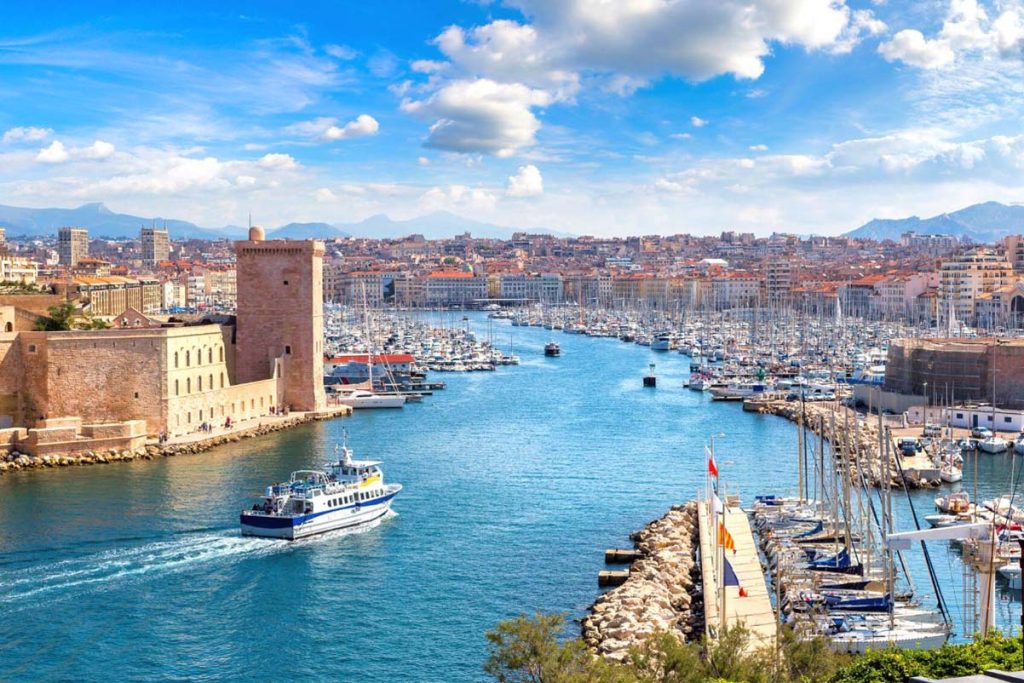Marseille, with its diverse neighborhoods and captivating landmarks, beckons travelers to explore its charms. Navigating this vibrant city requires a thoughtful approach to transportation. In this journal entry, I’ll share transportation tips, local insights, and my personal experiences in getting around Marseille.
Transportation Modes:
- Public Transportation:
Marseille takes pride in its well-established public transportation infrastructure, encompassing a comprehensive network of buses, trams, and a two-line metro system that serves as a backbone for efficient city navigation.
Services & Advantages:
The public transportation system in Marseille is marked by its efficiency, characterized by regular and reliable schedules that contribute to a seamless travel experience. The extensive coverage ensures that various neighborhoods and landmarks are easily accessible, catering to both locals and tourists. The metro, with its two well-planned lines, emerges as a particularly valuable asset, providing a quick and convenient means of transportation. Notably, it serves as a lifeline for those looking to explore iconic destinations such as the Old Port and Vieux-Port, two focal points that capture the essence of Marseille’s cultural and historical richness.
Drawbacks:
However, like any bustling urban transportation system, Marseille’s public transit does encounter challenges, especially during peak hours. The unavoidable congestion during these times can lead to crowded vehicles and platforms, potentially causing discomfort for passengers. Additionally, delays may occur due to the increased demand, impacting the system’s punctuality. For individuals unfamiliar with the city and its intricacies, deciphering bus routes might pose a hurdle. The complexity of the network can be overwhelming for first-time visitors, potentially leading to confusion and longer travel times as they attempt to navigate the system.
Reasons for Peak Hour Challenges:
The peak hour challenges in Marseille’s public transportation system are a result of the city’s dynamic and vibrant nature. As one of France’s major cultural and economic hubs, Marseille experiences a surge in commuter activity during specific times of the day. The concentration of individuals traveling to and from work, combined with tourists exploring the city, contributes to the heightened demand for public transit. The resulting congestion and delays are, therefore, a testament to Marseille’s popularity and the effectiveness of its public transportation system.
Addressing Bus Route Confusion:
To mitigate the confusion associated with bus routes, efforts could be made to enhance signage at key stops and provide clearer route information both online and at stations. Additionally, the development of user-friendly navigation apps tailored for tourists could prove beneficial, offering real-time information, route suggestions, and updates on any disruptions.
Geographical Location:
The metro and bus stops are strategically located throughout Marseille, covering the city’s various arrondissements.
How to Reach:
Purchase single tickets or day passes at metro stations or on buses. The Marseille City Pass, offering unlimited public transportation for a set duration, is a cost-effective option for tourists.
Ticket Prices & Discounts:
Ticket prices vary, with discounts available for seniors, youth, and students. The Marseille City Pass includes free access to public transportation and selected museums.
Recommendation Index:
Public transportation is recommended for budget-conscious travelers and those exploring central areas. It’s an efficient way to experience Marseille’s local life.
Personal Experience:
I found the metro system convenient for reaching key landmarks. The Marseille City Pass, purchased online, simplified my travels and provided significant cost savings.
- Bicycles and Scooters:
Description:
In a commendable effort towards sustainable urban mobility, Marseille actively promotes eco-friendly transportation options, placing a particular emphasis on bike and scooter rentals as convenient alternatives for short-distance travels.
Services & Advantages:
The city’s initiative embraces the availability of shared bikes and electric scooters, presenting locals and visitors with an accessible and environmentally conscious means of getting around. Biking or scootering in Marseille offers a distinct advantage in that it encourages a leisurely exploration of the city’s diverse neighborhoods. With a network of designated bike lanes weaving through the urban landscape, cyclists and scooter riders can navigate Marseille safely and comfortably. This emphasis on dedicated lanes not only enhances the safety of riders but also contributes to an enjoyable and scenic travel experience, allowing individuals to soak in the unique charm of each neighborhood.
Drawbacks:
Despite the merits of this eco-friendly approach to transportation, certain challenges accompany the usage of shared bikes and scooters in Marseille. The availability of these vehicles may exhibit variability, particularly during peak hours or in high-demand areas. This intermittent accessibility could pose inconveniences for those relying on these modes of transport. Furthermore, Marseille’s topography, characterized by hilly terrains, may present a challenge for riders, especially those less accustomed to navigating inclines. Negotiating these elevations could demand additional physical exertion and, in turn, impact the overall convenience of the ride. Another notable consideration is the limited availability of parking spaces for shared bikes and scooters, which could require users to spend additional time searching for suitable locations to park their rented vehicles.

Addressing Availability Concerns:
To mitigate availability concerns, continuous efforts could be directed toward optimizing the distribution of shared bikes and scooters based on usage patterns. Implementing technology-driven solutions, such as real-time tracking apps, could assist users in locating available vehicles more efficiently, enhancing the overall user experience.
Enhancing Accessibility in Hilly Areas:
Marseille could explore strategies to enhance accessibility in hilly areas, such as deploying electric bikes or scooters with improved power capabilities. Additionally, providing clear information about the topography and elevation changes in different neighborhoods can help users make informed decisions about their routes.
Parking Infrastructure:
To alleviate the challenge of limited parking spaces, the city could invest in expanding dedicated parking zones for shared bikes and scooters. Collaborating with local businesses and incorporating designated parking areas into urban planning initiatives could contribute to a more organized and user-friendly experience.
Geographical Location:
Bike and scooter stations are scattered throughout the city, with a concentration in central and tourist-friendly areas.
How to Reach:
Download the corresponding apps for bike-sharing or scooter-sharing services. Unlock and pay for the ride through the app.
Route Recommendation:
Use bikes or scooters for short trips within neighborhoods like Le Panier or along the waterfront for scenic rides.
Pricing:
Costs depend on the service provider and distance traveled. Look for promotions or discounts on the apps.
Recommendation Index:
Biking or scootering is recommended for those wanting a flexible and eco-friendly mode of transportation. Ideal for short distances.
Personal Experience:
I enjoyed exploring the Old Port area on a shared electric scooter. The app-based rental process was straightforward, and the cost was reasonable.

- Car Rentals: Description:
The option of renting a car in Marseille emerges as a gateway to unparalleled freedom, allowing individuals to chart their course through the city and its surroundings at a pace tailored to their preferences. This form of transportation proves to be an excellent choice, particularly for those eager to embark on day trips to nearby attractions, unlocking a realm of exploration that extends beyond the city limits.
Services & Advantages:
Car rentals, characterized by their flexibility and convenience, present a myriad of advantages for those seeking to delve into Marseille’s diverse offerings. The inherent freedom that comes with having a rental car allows for spontaneous decisions and impromptu detours, transforming the journey into a personalized adventure. This level of autonomy is particularly advantageous when planning excursions to destinations like Calanques National Park or the picturesque Provence region, where the ability to dictate one’s schedule enhances the overall experience. The convenience of having a private vehicle also translates into the ease of reaching remote or less accessible areas, uncovering hidden gems that might be overlooked with other modes of transportation.
Drawbacks:
However, the decision to rent a car in Marseille is not without its considerations. The city center poses challenges, notably in terms of parking availability. Finding suitable parking spaces can be a cumbersome task, particularly in areas characterized by high demand. Additionally, navigating the city during peak hours might lead to encounters with traffic congestion, potentially impacting the efficiency of travel and requiring strategic planning to avoid delays.
Addressing Parking Challenges:
To mitigate the challenge of parking, Marseille could implement measures such as expanding public parking facilities, designating clear parking zones, and encouraging the use of alternative transportation for intra-city travel. Providing comprehensive information about parking options and availability through digital platforms can assist visitors in planning their routes more effectively.
Strategies for Peak-Hour Navigation:
To navigate traffic congestion during peak hours, travelers may benefit from utilizing real-time traffic apps and planning their journeys during off-peak periods. Moreover, the city could explore initiatives to promote public transportation during peak hours, reducing the reliance on individual vehicles.
Geographical Location:
Car rental agencies are typically located at Marseille Provence Airport and in the city center.
How to Reach:
Reserve a rental car online through platforms like Rentalcars.com or directly with rental agencies. Pick up the car at the designated location.
Travel Time:
Driving from the city center to destinations like Calanques National Park may take around 30-40 minutes, depending on traffic.
Pricing:
Rental prices vary based on the car type, rental duration, and insurance options. Be mindful of fuel costs.
Recommendation Index:
Car rentals are recommended for those planning day trips or exploring destinations beyond the city. Ideal for a more personalized and spacious travel experience.
Personal Experience:
I rented a car to explore Calanques National Park. Booking through Rentalcars.com was seamless, and the flexibility of having a car enhanced my overall experience.
Navigating Marseille’s dynamic landscape involves choosing the right transportation mode based on your itinerary and preferences. Public transportation provides a budget-friendly and efficient way to explore the city, while bikes and scooters offer flexibility for short distances. Renting a car opens up opportunities for day trips and exploring the scenic outskirts of Marseille.
Consider your travel style and the destinations you plan to visit when deciding on transportation. Marseille, with its diverse options, ensures that every traveler can find a suitable means to navigate the city and uncover its hidden gems.



